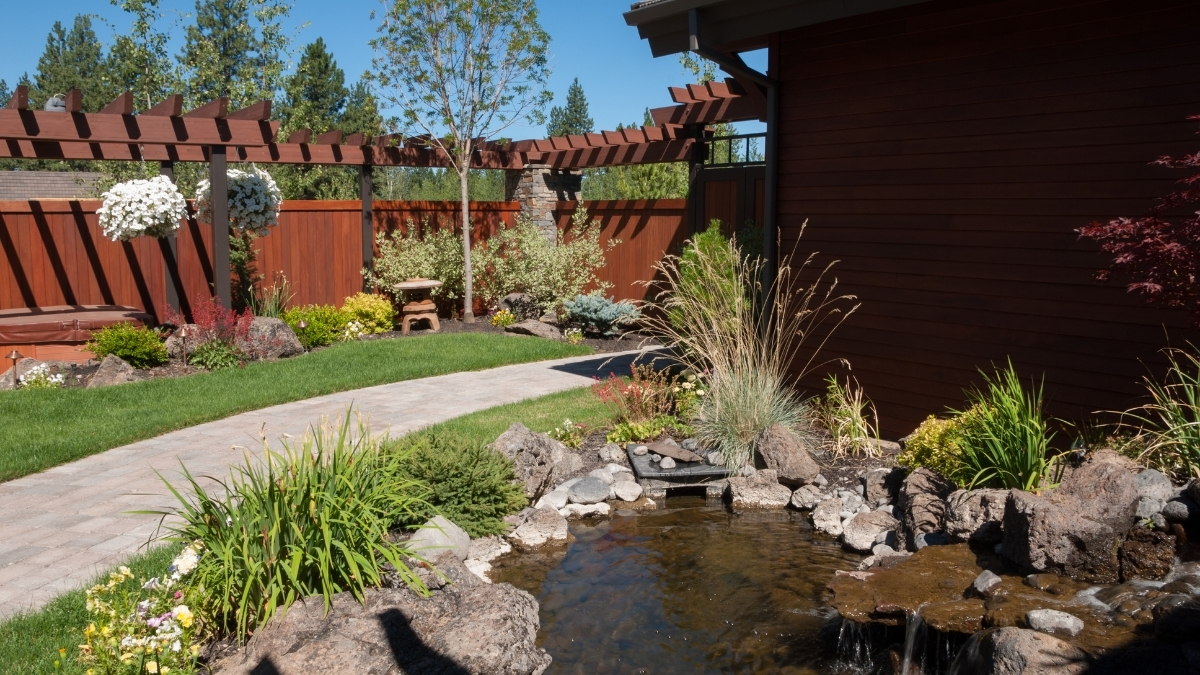
The Principles of Perfect Landscaping Design: Creating Harmony in Your Outdoor Space
Before any planting or hardscaping begins, a thorough understanding of the existing site is crucial. This involves assessing factors such as the topography (slope and elevation), soil type, drainage patterns, sunlight exposure (shade vs. sun), wind patterns, and existing vegetation. Recognizing these natural characteristics will inform the design choices, ensuring that the selected plants thrive and the overall layout complements the land. Ignoring the site's inherent qualities can lead to ongoing maintenance challenges and a less-than-harmonious result.
Contact Lawnworx at (706) 620 3544 to learn more! The Principle of Unity: A Cohesive VisionUnity in landscaping design means creating a sense of coherence and visual connection throughout the outdoor space. This can be achieved through the consistent use of certain elements, such as plant species, hardscaping materials (stone, brick, wood), colors, and textures. A unified design feels intentional and well-planned, rather than a collection of disparate elements. This doesn't mean everything has to be identical, but rather that there's a common thread that ties the different areas of the landscape together.
The Principle of Balance: Creating Visual EquilibriumBalance in landscaping refers to the distribution of visual weight within the design. This can be achieved in two primary ways:
- Symmetrical Balance: This involves mirroring elements on either side of a central axis, creating a formal and often traditional feel. Think of identical flowerbeds flanking a walkway.
- Asymmetrical Balance: This involves creating equilibrium using different elements that have similar visual weight. For example, a large tree on one side of the yard might be balanced by a grouping of smaller shrubs and rocks on the other. Asymmetrical balance tends to feel more natural and informal.
Proportion refers to the relationship in size between different elements within the landscape and the overall space. Ensuring that elements are appropriately scaled to each other and to the size of the yard is essential for visual harmony. Overly large features can overwhelm a small space, while undersized elements can get lost in a larger landscape. Consider the mature size of plants when making selections to maintain proper proportion over time.
The Principle of Rhythm and Line: Guiding the EyeRhythm in landscaping is created through the repetition of elements like plants, colors, textures, or hardscaping features at regular intervals. This repetition creates a sense of movement and guides the viewer's eye through the landscape. Line, whether created by pathways, hedges, or the edges of planting beds, also plays a crucial role in directing the eye and defining different areas within the outdoor space. Smooth, flowing lines create a sense of tranquility, while more angular lines can add a sense of dynamism.
The Principle of Emphasis: Creating Focal PointsEmphasis involves creating one or more focal points within the landscape to draw the viewer's attention. This could be a striking tree, a beautiful water feature, a vibrant flowerbed, or an interesting sculpture. Focal points provide visual interest and anchor the design. They should be strategically placed to complement the overall layout and guide the eye through the space.
The Principle of Transition: Smooth Visual FlowTransition in landscaping involves creating a smooth and gradual change between different elements. This can be achieved through the careful selection of plants with varying heights, textures, and colors, or through the use of gradual changes in hardscaping materials. A well-designed landscape incorporates smooth transitions to create a sense of flow and visual comfort.
Did you know?The concept of the "golden ratio" (approximately 1.618) is often applied in landscape design to create aesthetically pleasing proportions and spatial relationships. This mathematical principle, found in nature, can contribute to a sense of natural harmony in the design.
Ready to transform your outdoor space into a harmonious retreat? Contact Lawnworx at (706) 620 3544 for expert landscaping design and installation services tailored to your vision.




